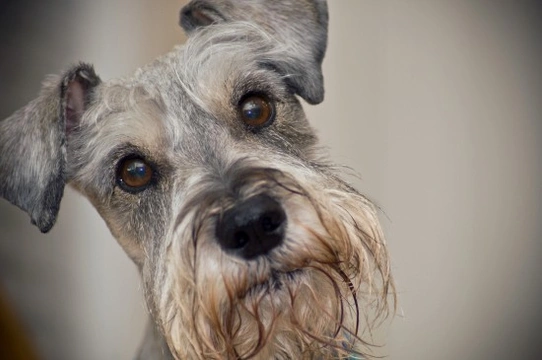
Doge Acne - Spots and Blackheads on Dogs
Not all dog owners are aware that just as people can, dogs may also get the occasional spot, pimple of blackhead too! Some dogs can even develop canine acne, which is particularly common in puppies and younger dogs, and just as with people, this will sometimes require veterinary treatment.
So, how can you tell if your dog has spots or blackheads, or tell them apart from other conditions? Plus, how should you deal with it if your dog is spotty or appears to be undergoing hormonal skin changes, regardless of their age? Read on to find out!
Puppy acne and canine acne
Just as human teenagers may be prone to suffer from acne as they go through the hormonal changes that signal their transition to adulthood, so too can adolescent dogs suffer from the same problem! Acne may also be present in adult or older dogs, and for some dogs, it can continue to recur and flare up throughout their lives.
Generally, once a dog is spayed or neutered, this will automatically lead to a reduction in the hormone production that leads to the outbreak of spots, acne or blackheads, but this is not always the case, as blackheads and spots can sometime occur alongside of other sensitivities or problems with the skin.
Because human owners cannot always recognise genuine spots or acne on the dog, nor tell them apart from other conditions, it is important to take your dog along to the vet for diagnosis if they break out in spots, regardless of their age.
Treating canine acne and spots
As tempting as it may be, it is important that you do not try to pop or treat your dog’s spots at home without the advisement of your vet. As with people, picking at spots on your dog can lead to localised pain and inflammation, infections and potential scarring, and spots are always best left alone!
The medications or treatments that your vet will prescribe to deal with blackheads or an outbreak of spots are often similar or related to human products that deal with the same condition. However, you should never use human spot treatments on your dog, as they are too strong (even the milder ones) and can lead to skin irritations and a worsening of the problem.
Your vet will generally advise washing the affected area daily with a mild soap solution, and they may also prescribe a mild benzoyl peroxide cream or topical treatment to treat the spots.
In severe cases, steroids might be prescribed to help your dog to fight off problem acne, or antibiotics in the case of infected spots or blackheads.
What looks like blackheads, but isn’t?
There are a few skin problems and conditions that can look similar to canine blackheads or acne, and it is easy for the layperson to confuse them with actual spots.
The most common of these is a condition called folliculitis, which usually presents around the groin area and in the armpits of affected dogs. Folliculitis refers to an infection of the follicles of the hairs themselves, leading to small pockets of pus, blackheads, or other symptoms that look like spots developing in the pores of the skin that contain hair follicles.
Mild cases of folliculitis are often treated in the same way as blackheads and acne, but in severe or recurrent cases, a long course of antibiotics may be required, along with regular medicated baths and potentially clipping the hair away from the affected areas.
While any breed or type of dog can theoretically develop folliculitis, it is particularly common in Schnauzers of all sizes, so if you own a Schnauzer or mixed breed with Schnauzer origins, be particularly alert to the condition.
Demodetic mange
Tinny irritating skin mites known as demodetic mange is another condition that can both look like spots and blackheads and can actually cause them to develop. Demodetic mange can soon make a dog look very unkempt, and spread quickly from dog to dog, although the condition does not affect people.
If your dog is infected with demodetic mange, they may begin to lose their fur, and their skin in various areas of the body will appear very sore and inflamed. Your dog is likely to scratch and itch constantly, further irritating the skin and contributing to hair loss.
Along with the redness and constant itching, your dog is also likely to have crusted, sore areas of skin across their body, often accompanied by blackheads, spots and pus-filled pimples that look like acne.
Formal diagnosis is required in order to take a skin scraping for microscopic examination, and a range of different treatment methods may be used, including antibiotics, anti-parasitics and other medications. Mange is very irritating and painful for your dog, so if you suspect that they are affected or that their apparent spots or acne are not all that they seem, take them along to the vet ASAP.



